Making the Mazda FD RX-7 Immortal
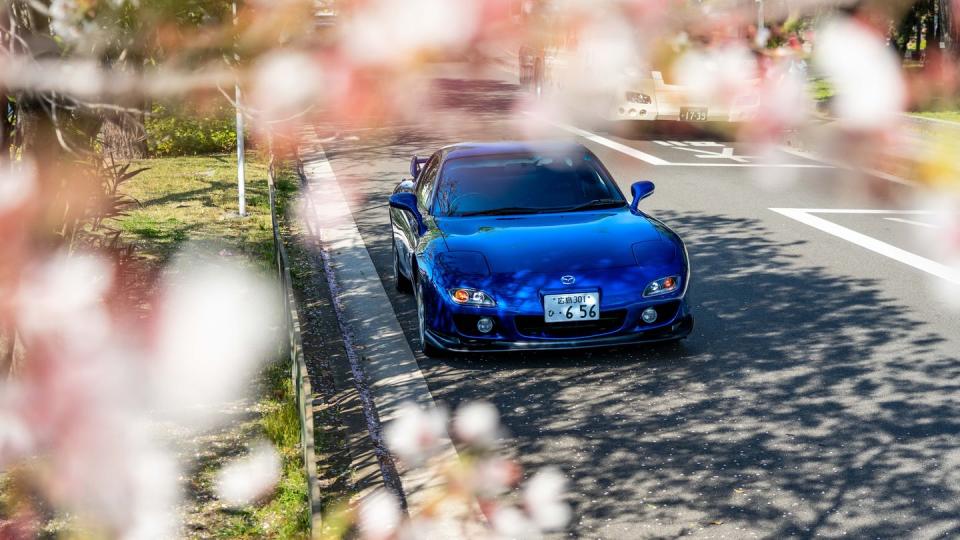
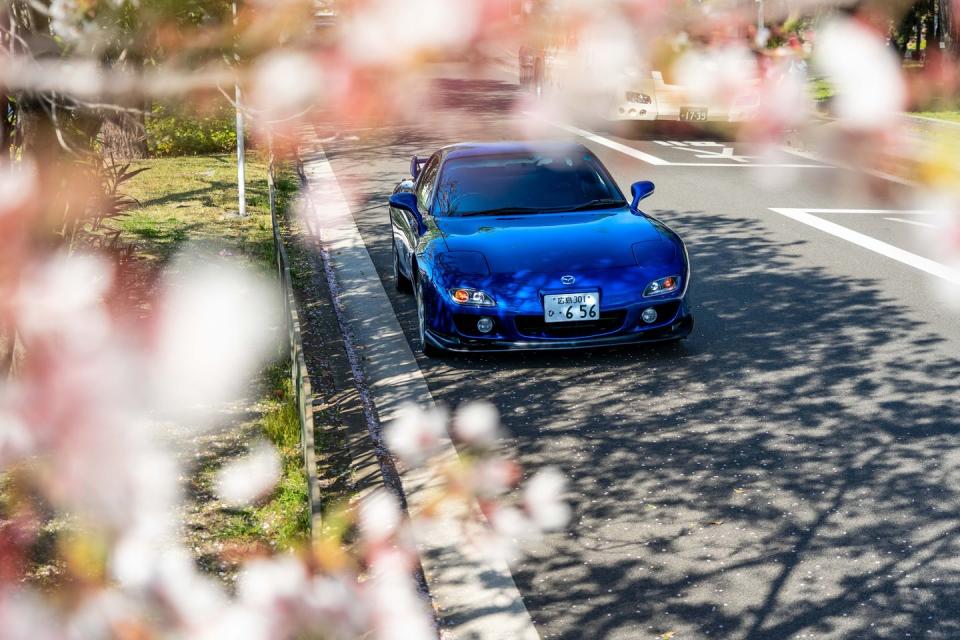
Moved twice in a hundred years, the Inari shrine now sits on the grounds of Mazda's Hiroshima factory site, spiritually linked to the 1300 year old Fushimi Inari Taisha in far away Kyoto. For Mazda, Inari is an important Shinto shrine, site of dozens of festivals and rites marking important moments in the company's history. But a little further down the road, in a secret backroom, are spiritual relics of a different kind. An NSU Ro80 and a Wankel Spider in flawless condition. Alongside them, a curving body in white, a third-generation RX-7 twin-turbo, ready to be reborn anew.
Mazda's MX-5 factory restoration program has been running for a little more than five years at this point, producing a trickle of Japanese-market NA Miatas that are for all intents and purposes, brand new. Speaking through a translator, manager Takuya Kunimoto says that from the moment of launching the MX-5 restoration program, it was always the intent to expand. The FD RX-7 had to be brought back.
Kunimoto is bullish about when the RX-7 restoration program might begin – perhaps as soon as next year – but Mazda's official position is more cautious. Company spokesperson Yusuke Hayashibara indicated that Mazda is planning to announce specifics on the program during the 2024 fiscal year, which begins in May.
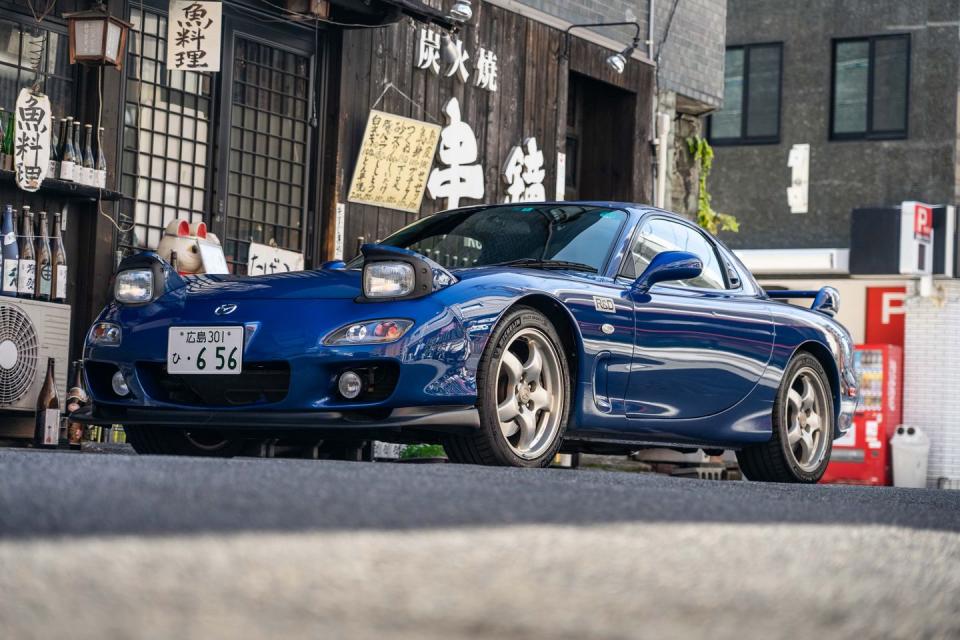
However, Mazda is already providing a 72-item list of reproduction parts for the third-generation RX-7, from common wear items to hard-to-find pieces like vacuum hoses and grommets. Further, Mazda is also now building and selling brand-new dual-rotor 13B longblocks to Japanese customers. All the pieces are here to create immortality for one of Japan's greatest sportscars.
Yoshinobu Nishida, former development driver, is just a week away from retirement when he sits down in Mazda's museum for an interview. He has the mien of a fighter pilot, mixed with a dose of mischievous delight. On his phone, he shows me pictures of his retirement project car: a modified creamsicle-orange FD RX-7 with more than a passing resemblance to Han Lue's car from Tokyo Drift.
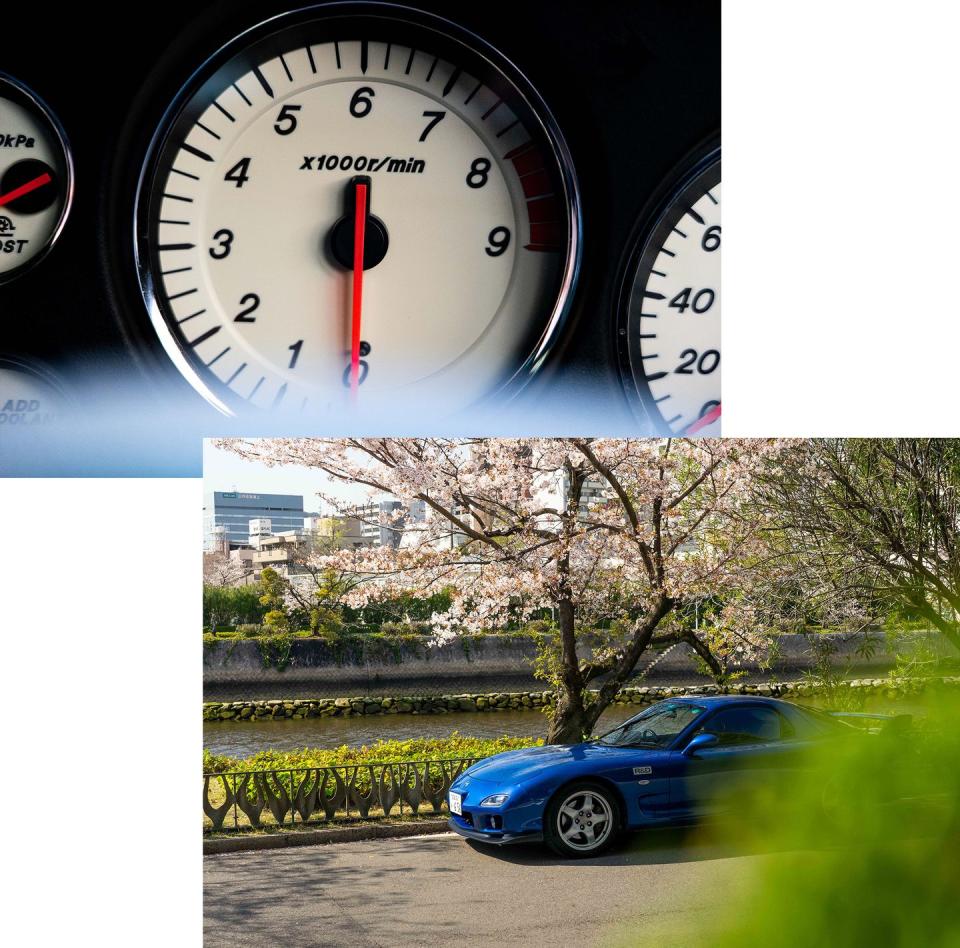
“With the FC,” Nishida says, “We were always chasing Porsche, but not quite there. With the FD, we thought, 'maybe we can catch them.'”
And what did he think the first time he drove an FD RX-7 in anger? Nishida shakes his head and laughs.

He pulls a sheaf of old photos from his pocket and spreads them out on the table. During the FD's development, Nishida was based at Mazda North America's Irvine offices, and in proper SoCal style, drove around in a Cobra replica. His pictures show tantalizing glimpses of what being a development driver in the early 1990s looked like, car trailers disguised as Winnebagos, benchmarking the FD against the Acura NSX and Mitsubishi 3000GT at Willow Springs. It was a golden age for Japanese performance cars.
The day before meeting with Nishida, I spin up the sequential turbos on a last-of-the-breed 2002 RX-7, and sent it shooting down a short tunnel on the outskirts of Hiroshima. This unrestored car is owned by Mazda's R&D department, and occasionally driven by new engineers, as a demonstration of what the company values. It's absolutely wonderful.
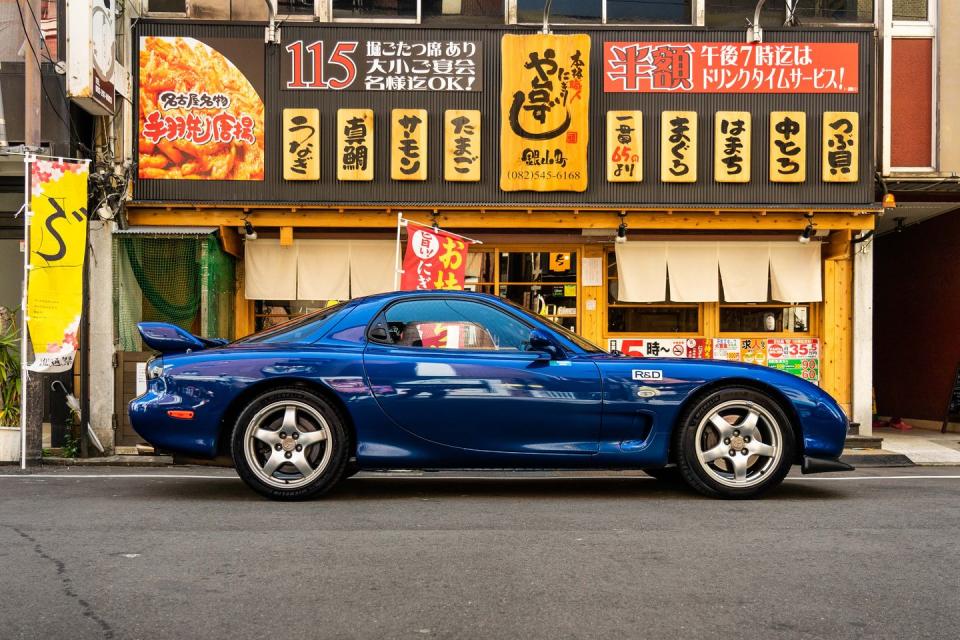
If the original Miata is a friendly puppy, prone to roll and eager to scamper about, the FD is a great deal more serious. In its final year, the twin-rotor 13B was getting 276 hp out of its sequential twin turbos, peaking at 6500 rpm but with turbine-smooth thrust that stretched towards 8000 rpm.
The FD RX-7 doesn't hold your hand and flatter your driving. It tries to cook the leg closest to the transmission tunnel and gives off a vaguely murderous aura. Reactions are cat-quick with just a hint of the Miata's roll, compact and small and vicious. By comparison, a contemporary Supra Twin-Turbo is a heavyweight on horse tranquilizers.
Announced in the same year as its unlikely 24 Hours of Le Mans victory, the third-generation RX-7 is probably the brightest spot in the company's roadcar history. Everything before is scrappy underdog punching above its weight. Everything afterwards is grappling with the reality of needing to sell boatloads of CX-50s to stay financially afloat. For a brief, golden moment, Mazda let its engineers and test drivers push the throttle past the stops into full afterburner mode. That spirit deserves preservation.
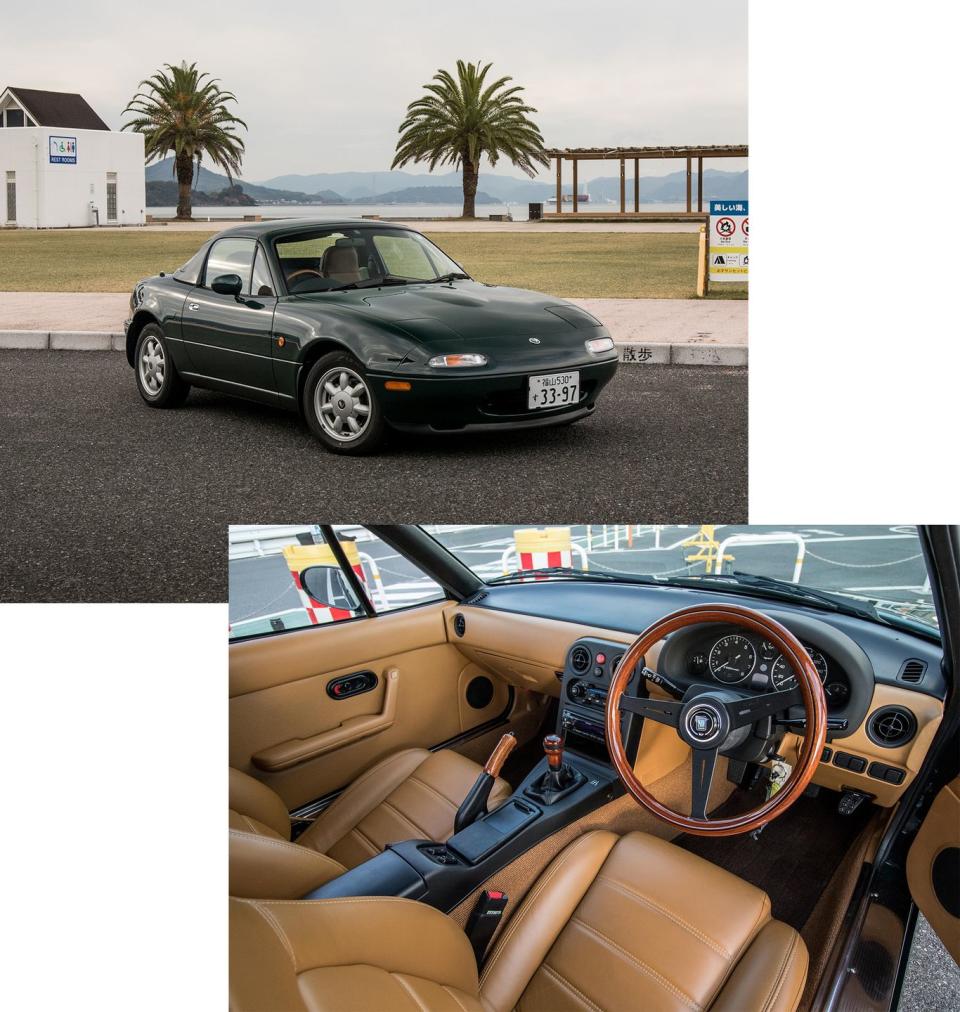
Back at the museum, Nishida laughs when asked if he would consider applying to have his car receive Mazda's restoration service. “Where's the fun in that?” He'll get his own hands dirty.
Mazda has learned much from its NA restoration program, though those lessons have been slow in coming. The process of comprehensively renewing a mass-produced car is totally different from what, say, Jaguar Classic does. Cars built as late as the 1960s are steel, leather, and wood, all materials shaped by human hands for centuries. Getting a plastic panel, contoured vacuum hose, or power window support bracket made is much more complex.
According to Kunimoto, the restoration process for the RX-7 will be at least twice as complicated as for the NA. Not only is the powertrain much more complex and occasionally temperamental, but there are more parts required overall. Further, as Mazda's then-flagship, the RX-7 came in a bewildering array of special editions, although so, too, did the MX-5.
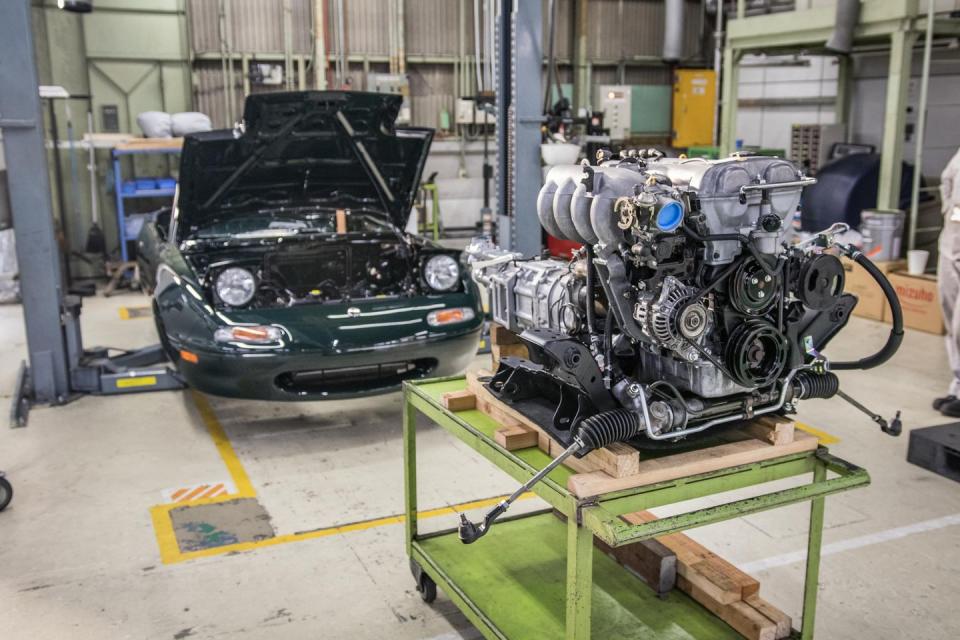
For the NA program, Mazda returned to its original suppliers with requests for reproduction parts made as close to original as possible. The process was far more complicated than you might imagine, as everything from safety standards to production processes has changed a great deal in the decades since these cars were on sale. Further, while Mazda had sold a quarter of a million MX-5s by 1992, and was thus ordering in bulk, it now needs to only stock a much smaller amount of parts.
The restoration shop is also limited in scope. Mazda won't speak to the specifics of planned volumes until closer to the official announcement of the program, but the NA restoration process provides a clue. As of November of 2022, Mazda had completed just twelve NA customer restorations. Demand here far outstrips supply, and it is likely that the situation will be the same for FD owners, who have been clamoring for a restoration program since the NA version was announced.
Thus, unlike Jaguar and Ferrari's factory restoration programs, Mazda's classic program is unlikely to be a profit center. Officially, Hayashibara said, “The operation of the restoration service runs with positive profits as a business, but we do not think it can greatly contribute to the company's bottom line since the number of cars the team can restore is limited. It contributes to the company by allowing customers to enjoy Mazda's heritage cars for a long time.”
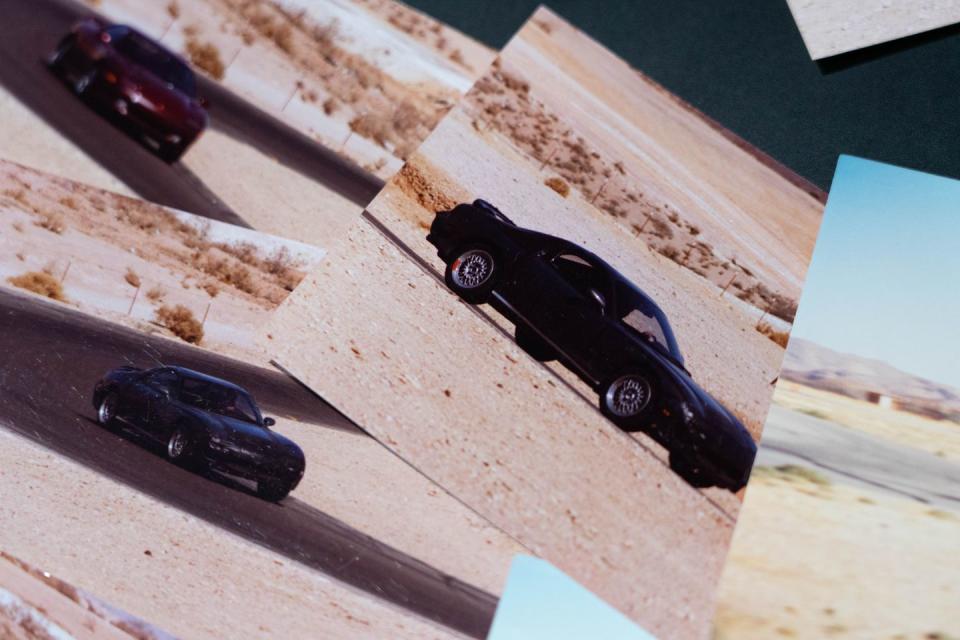
In other words, the program is more about brand-building than a sideline business. Having said that, some of the restoration technicians were pit crew for the Le Mans effort in 1991. Having your FD RX-7 restored by someone who wrenched on the 787B while it battled Peugeot prototypes has a cool factor that is off the charts.
In the NA restoration process, customers are invited to apply, and cars must pass initial inspection. Some special editions are ruled out, others are allowed. Generally, the car needs to be in at least fair condition to be considered, free of modifications.
The cost for an FD restoration is not yet announced, but for the NA, it's 4,850,000 Yen to start (about $32,000). Price on a brand-new 13B longblock seems relatively reasonable at the equivalent of $5700, although that is without turbos, manifolds, or ancillaries. It should also be pointed out that the restoration service is only available to Mazda's Japanese customers.
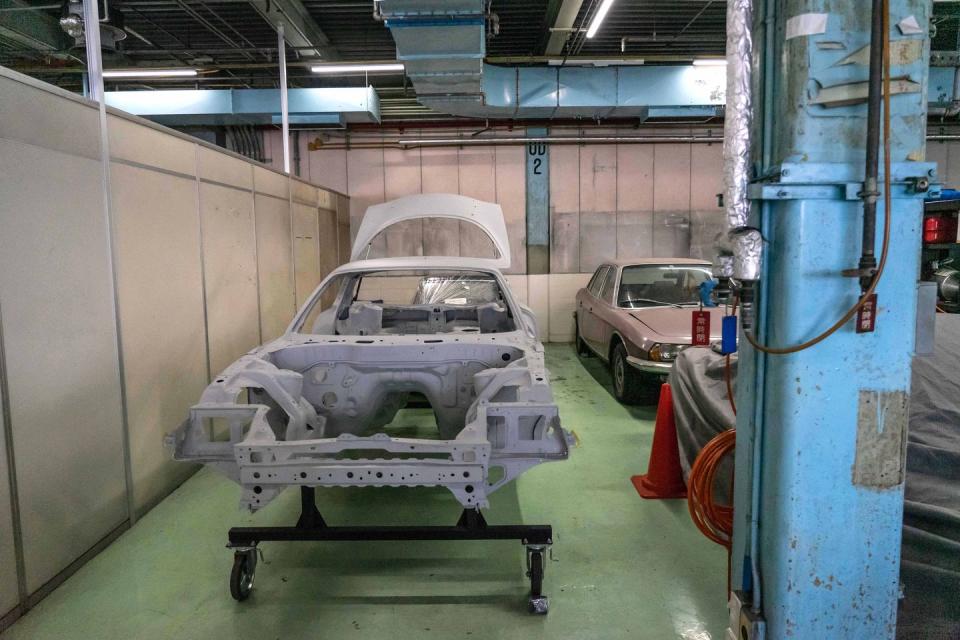
The list of parts, however, is more widely available, which is good news for independent shops specializing in the FD. RX-7 values haven't skyrocketed like those of the R32-generation Nissan Skyline or Mk IV Supra Turbo, but they are holding solid. These cars are valuable enough that restoring one is worth it, and anyone building a portfolio of significant Japanese performance cars from the bubble economy era will want to add one to their garage.
When the design elements for the FD were being discussed by Mazda designers Tom Matano and Wu-Huang Chin, the pair used to attend the Pebble Beach Concours, seeking inspiration. Rotary engines are compact, and create unique packaging options; the original 1960s Cosmo looks like a UFO compared to the more conventionally beautiful Toyota 2000GT. But Matano and Chin were seeking to create the latter. They wanted a car that might be able to roll onto the grass at Pebble one day, and not look out of place.
The idea that a Mazda could stand alongside Rolls-Royces and Alfa-Romeos must have seemed ludicrous at the time. Thirty years on, the FD RX-7 has earned its place in the sun, both in performance and design. The gatekeepers at Pebble Beach might not be ready to lift the velvet rope just yet. But Mazda's restoration process and parts make sure that the FD will be ready when they do. It's the spirit of a company, enshrined in four-wheeled form, now and forever.

A car-lover’s community for ultimate access & unrivaled experiences.JOIN NOW Hearst Owned
You Might Also Like

 Yahoo Autos
Yahoo Autos 